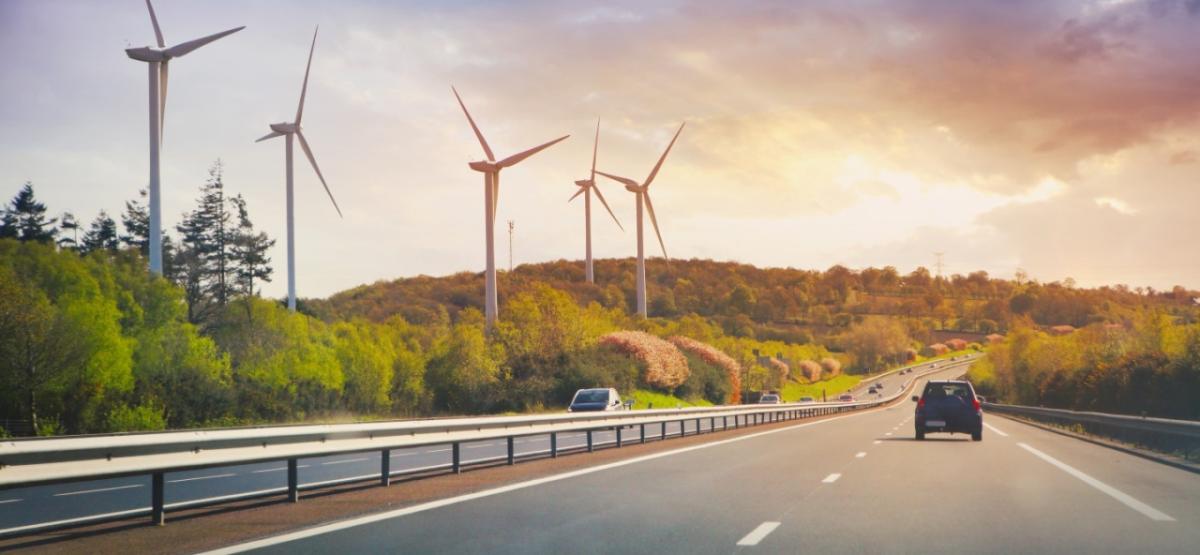A Career with a Commitment to a Healthy Planet: What 30 Years of Environmental Leadership Looks Like

As the world’s largest, most broadly based healthcare company, we understand that human health is inextricably linked to environmental health—you can’t have healthy people without a healthy planet. In fact, our commitment to the environment is enshrined in Our Credo, so "protecting the environment and natural resources" is a natural part of everything we do at Johnson & Johnson. In recognition of World Environment Day, here are some of the ways we’re making good on that commitment.
We're Greening Our Offices on a Global Scale
Where does all the breakthrough innovation go down at Johnson & Johnson? The answer is in our increasingly state-of-the-art and sustainable properties around the world.
Take Titusville, New Jersey, where 13,500 solar panels straddle 20 acres and generate enough electricity to power 70%of the work done there by 1,500 employees each day. Then there's Beerse, Belgium, where we're applying eco-friendly geothermal technology to an industrial site for the first time in Western Europe—a $40 million project expected to cut CO2 emissions by about 30%.
No less impressively, Johnson & Johnson’s McNeil Consumer Healthcare site in Helsingborg, Sweden, recently became the first-ever Johnson & Johnson location to be certified carbon dioxide neutral for all energy sources across manufacturing, warehousing and R&D facilities. The site has reduced CO2 emissions by 5,000 tons, cut its energy usage by one-fourth and ramped up production by 25% over the past seven years. Not bad.
Finally, at our facility in Cork, Ireland, 35% of all electricity comes from an on-site wind turbine. The turbine has offset about 14,000 tons of CO2 since being installed in 2014—the equivalent of taking 7,300 cars off the road—and we're thrilled to announce that construction on a second turbine is now underway.
Walking the Talk By Greening Our Revenue Stream
We took a bold stance on carbon emission back in 2015—part of our Health for Humanity 2020 Goals—pledging to achieve an absolute reduction in our carbon emissions of 20% by 2020 and 80% by 2050. What's more, we set out to produce or procure 35% of electricity from renewable sources by 2020. Today, we're well on our way to achieving these goals.
In fact, we've made tremendous strides already. In 2017, for instance, more than 20% of our total electricity use came from green sources. And since 2010, our overall carbon emissions have gone down more than 10% globally.
We've also pledged that by 2020, 20% of all revenue will come from Earthwards®-recognized products. To receive Earthwards® recognition, products must be approved by a board of internal and third-party sustainability experts on impact areas like materials, waste reduction and energy and water use.
We're also working to increase the recyclability of our consumer product packaging to more than 90% (on a weight basis) by 2020 across five markets where mature recycling infrastructure exists. And in another three markets, where recycling infrastructure is less mature, we're forming partnerships to advance material recovery and recycling infrastructure.
We know that we need tools and data to help us assess the impact of our products and drive better outcomes. The Global Aquatic Ingredient Assessment Tool™ (GAIA) is a good example of how we’re working in that direction. GAIA allows us to assess the potential impact of ingredients and formulas on the water quality, sediments and species of a given aquatic ecosystem.
Finally, our Sustainability Accelerator Grants program has funded 20 innovative sustainability projects in the past two years to enhance and protect the natural resources that we are privileged to use.
Leveraging Scale to Create Far-Reaching Impact
We operate over 200 businesses around the world, which means we have a continuous flow of raw materials, fuel and other resources in motion every day. It also means that improvements we make can have an impact on a truly massive scale.
To leverage our global scale and to accelerate environmental and social improvements across the value chain, we're being proactive about our supplier base. That's why we're taking steps to move 80% of our overall spend to suppliers enrolled in our Sustainable Procurement Program by 2020.
Our commitment to making a difference extends beyond our own operations. We’re taking action to make the planet healthier—finding partners, advocates and fellow visionaries to help us unlock change at the rate and scale needed to make better health a reality for more people, in more places.
That’s why we’ve partnered with the C40 Cities Climate Leadership Group, a network of more than 90 of the world’s largest cities around the globe that is working to address climate change. Air pollution is one of the leading risk factors for many acute and chronic diseases. Specifically, air pollution is responsible for as much as 36% of deaths from lung cancer, 34% of deaths from stroke and 27% of deaths from heart disease, according to the World Health Organization. What’s more, 92% of citizens around the world live in areas that do not meet air quality standards. Through research and education, the C40 partnership will help connect the dots between better climate and air and measurably better health benefits in vulnerable urban areas. Our goal is to help more people in major cities around the world have cleaner air to breathe.
We know we can move the needle and make a difference, but we need the best and the brightest talent to help us get there. If you want to work in a role where you can have a positive impact on human health, and for a company that's deeply committed to improving planetary health, see all of the ways you can today.

